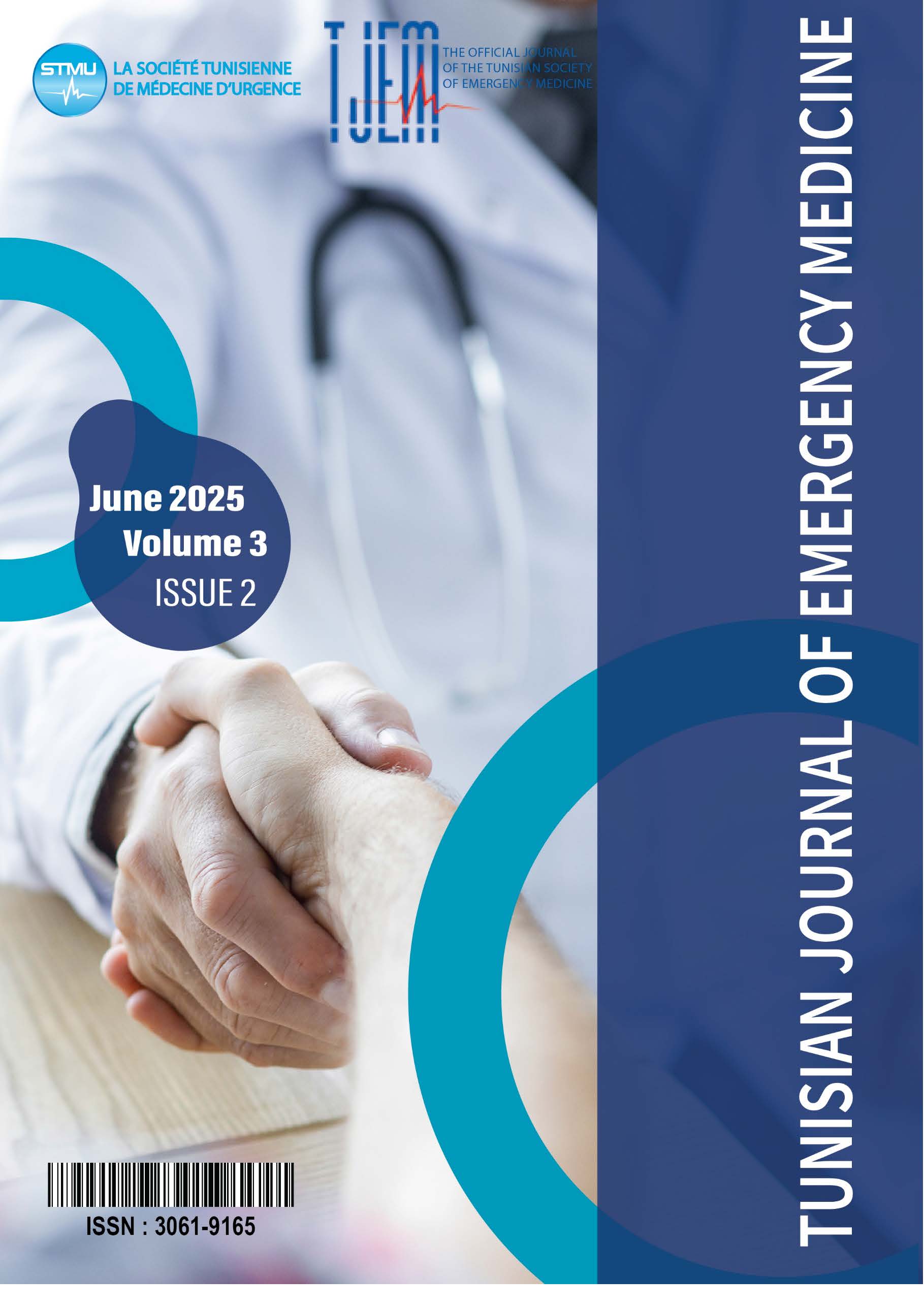Emphysematous pyelonephritis with infected abdominal aorta pseudoaneurysm among a diabetic man
- Authors
-
-
Wiem Feki
Radiology Department, Hedi Chaker University Hospital, University of Sfax, Tunisia -
Fatma Hammami
Infectious Diseases Department, Hedi Chaker University Hospital, University of Sfax, Tunisia -
Amina Kammoun
Radiology Department, Hedi Chaker University Hospital, University of Sfax, Tunisia -
Makram Koubaa
Infectious Diseases Department, Hedi Chaker University Hospital, University of Sfax, Tunisia -
Mounir Ben Jemaa
Infectious Diseases Department, Hedi Chaker University Hospital, University of Sfax, Tunisia -
Zaineb Mnif
Radiology Department, Hedi Chaker University Hospital, University of Sfax, Tunisia
-
- Keywords:
- Emphysematous pyelonephritis, Pseudoaneurysm, Aorta , Diabetes mellitus
- Abstract
-
Background : Emphysematous pyelonephritis (EPN) is an acute necrotizing infection of the kidney that generates gas within the renal parenchyma/collecting system or perinephric. It requires aggressive medical and often surgical management. To our knowledge, its association with an infected abdominal aorta pseudoaneurysm has until now never been documented. We report the case of a diabetic patient with concomitant infected abdominal aortic pseudoaneurysm with EPN.
Case Report : A 63-year-old man with a history of uncontrolled diabetes mellitus type 2 has presented with a fever, abdominal pain, dysuria and malaise. Physical examination revealed signs of moderate shock. Ultrasound showed absence of left kidney which is replaced by a structure containing several echogenic foci mimicking left colic flexure and a normal-sized right kidney. An urgent computed tomography (CT) scan revealed the presence of air as of the scout CT image, then confirmed during the CT scan by demonstrating intraparenchymal, perinephric, and pararenal air, consistent with EPN. In addition, it showed the presence of voluminous pseudoaneurysm arising from the left lateral wall of the abdominal aorta, with alteration of left renal artery. Emergent nephrectomy and open repair of the large pseudo-aneurysm were strongly considered. In the operating room, as of initiating anesthesia a cardiopulmonary arrest has occurred. In spite of the resuscitation, the patient passed away.
Conclusion :
Our case highlights a rare and fatal association between EPN and an infected abdominal aortic pseudoaneurysm. Early recognition and prompt imaging are essential in diabetic patients presenting with signs of sepsis and abdominal symptoms. The coexistence of these two severe infections presents significant diagnostic and therapeutic challenges, emphasizing the need for rapid multidisciplinary intervention to improve outcomes.
- Downloads
- Published
- 30-06-2025
- Section
- Case Reports
- License
-
Copyright (c) 2025 Tunisian Journal of Emergency Medicine

This work is licensed under a Creative Commons Attribution-NonCommercial-ShareAlike 4.0 International License.


